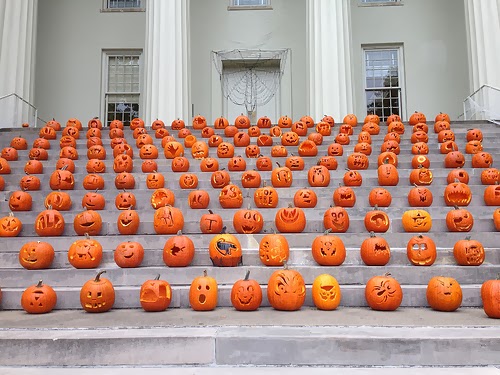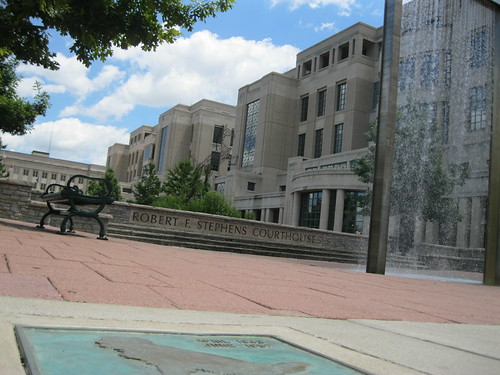And now, the History of Halloween as it originally appeared in yesterday’s Jessamine Journal:
Like any modern holiday, Halloween has an ancient history. First influenced by Gaelic paganism, the holiday took on Christian significance over time.
The Gaelic festival of Samhain, held at the end of October was to mark the end of the harvest season and the beginning of winter. During this time, spirits and fairies could more easily enter our world so people left for them both food and drink. Either imitation or disguise from these spirits prompted many to wear costumes and visit neighbors seeking small morsels of food.
Sound familiar?
And in 835, Pope Gregory IV moved the celebration of All Saints’ Day from mid-summer to Nov. 1. On the church calendar, Nov. 2 is All Souls’ Day.
These solemn, or hallowed, days had by the 12th century become holy days of obligation in prayer for the souls of all who had died.
But in Ireland and the other old Gaelic countries, the old tradition of Samhain lingered on the eve of these hallowed days. And so the term ‘All Hallows’ Eve’ evolved into ‘Halloween’.
When Europeans first came to America, they did not bring Halloween celebrations with them. The English who established the early colonies were Puritans who did not recognize — but largely opposed — Halloween.
(Remember the Salem Witch Trials? Suffice it to say that the Puritans weren’t fond of anything even remotely linked to paganism.)
But decades later, the Irish began to immigrate to the United States and with them they brought their traditions. Among these was the celebration of Halloween. With the celebration came visits from door-to-door in costume in exchange for treats and carved pumpkins to ward off evil spirits.
Like so many of our holidays, Halloween has its roots in both paganism and early Christianity with a hearty dose of American capitalism.
Yes, Halloween is big money in America. Second only to Christmas, more money is spent on Halloween (candy, decorations, costumes, etc.) each year than any other holiday on the calendar. It is estimated that the economic impact of Halloween is around $5 billion.
That’s a lot of Reese’s pieces.
At our church, we celebrated Halloween last Sunday evening with a trunk-or-treat where the kids dressed up and went from tailgate to tailgate to collect candy from fellow parishioners before we had a costume contest and ate supper together. A lot of good fun.
And tonight, my family will walk down Nicholasville’s Main Street as we see friends in the community doling out candy or receiving the same, all in costume. It will be, as it’s called, a Spooky Time on Main.
Whether it be witches or ghouls or goblins or, given our current obsession, zombies, the costumes are sure to give fright. Unless dressing up as a ninja or princess or doctor or other more subdued character is the costume of choice.
I think one of my favorite aspects of Halloween mirrors an aspect of the old Samhain simply because the holiday marks the onset of the long darkness of winter. Cabin fever will soon begin as our sense of community dissipates during the cold months of winter; we simply don’t see our neighbors as much when it is cold.
Until spring, our front porches sit largely barren. Our lawns won’t need mowing.
Our opportunities to see one another suffer a natural decline during the cold months.
So Halloween offers that last chance to visit with friends before the onset of winter.
This column originally appeared in the Jessamine Journal.
It should not be republished without permission.



















